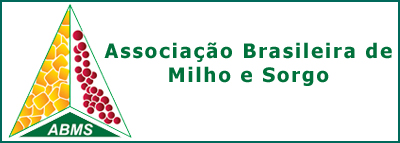MAIZE SEEDING RATE: REPLACING GERMINATION WITH FIELD EMERGENCE AND ACCELERATED AGING
Palavras-chave:
Stand density, Physiological potential, Vigor, Mean percentage errorResumo
The objective of this study was to evaluate the suitability of
replacing the germination test in the calculation of seed quantity with the
results of the field emergence and accelerated aging tests. The experiment was
conducted using a randomized block design in a 2x5 factorial scheme: two
levels of seed vigor and five levels of seeding safety margin (0, 5, 10, 15 and
20%) using untreated seeds of the hybrid Defender Viptera 3. The evaluated
parameters were percentage of germination, field emergence and accelerated
aging. The analyzed variable, plant stand, was submitted to analysis of variance
at the 5% significance level and, when significant, the results were submitted
to the Mean Percentage Error statistical procedure to determine the degree of
proximity between forecast and observed values of stand density. The results
showed that, requiring a smaller safety margin, the results of field emergence
and accelerated aging tests applied in the seeding rate calculation were more
accurate than germination for stand density estimation. For so, nevertheless,
they required larger amounts of seeds in sowing operation to reach the same
stand density obtained with the use of germination test.
Downloads
Publicado
Como Citar
Edição
Seção
Licença
Autores que publicam nesta revista concordam com os seguintes termos:- Autores mantém os direitos autorais e concedem à revista o direito de primeira publicação, com o trabalho simultaneamente licenciado sob a Creative Commons Attribution License que permitindo o compartilhamento do trabalho com reconhecimento da autoria do trabalho e publicação inicial nesta revista.
- Autores têm autorização para assumir contratos adicionais separadamente, para distribuição não-exclusiva da versão do trabalho publicada nesta revista (ex.: publicar em repositório institucional ou como capítulo de livro), com reconhecimento de autoria e publicação inicial nesta revista.
- Autores têm permissão e são estimulados a publicar e distribuir seu trabalho online (ex.: em repositórios institucionais ou na sua página pessoal) a qualquer ponto antes ou durante o processo editorial, já que isso pode gerar alterações produtivas, bem como aumentar o impacto e a citação do trabalho publicado



